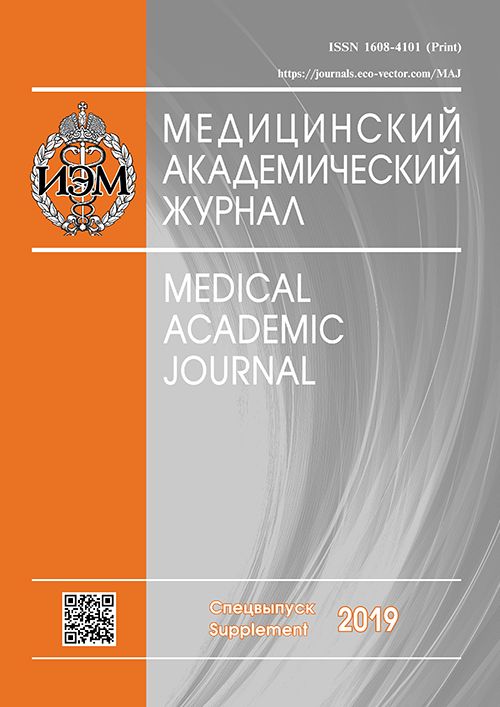PRURITUS AS A MARKER OF IMMUNE DISTURBANCES IN PSORIASIS
- Authors: Barilo AA1, Smirnova SV1
-
Affiliations:
- Scientific Research Institute of Medical Problems of the North - Federal Research Center “Krasnoyarsk Science Center” of the Siberian Branch of the Russian Academy of Sciences
- Issue: Vol 19, No 1S (2019)
- Pages: 60-61
- Section: Articles
- Published: 15.12.2019
- URL: https://journals.eco-vector.com/MAJ/article/view/19325
- ID: 19325
Cite item
Abstract
Objective: Based on the study of some indicators of cellular and humoral immunity, evaluate the features of immunoreactivity in patients with psoriasis with concomitant pruritus. Materials and methods. Patients were examined with vulgar PS (n = 97), which were divided into 2 groups: group 1 - PS with pruritus (n = 73, mean age 40.0 ± 1.5 years), group 2 (comparison group) - PS without pruritus (n = 24, mean age 41.5 ± 2.7 years). The cellular immunity indicators was carried out by flow cytofluorimetry. Phagocytic activity of peripheral blood neutrophils was studied microscopically by the absorption of latex particles. Concentrations of immunoglobulins, cytokines, circulating immune complexes in the blood serum were evaluated by the method of enzyme-linked immunosorbent assay. Statistica 6.0 was used for statistical analysis. Our studies allowed us to identify features of PS with concomitant pruritus: severe clinical course of the disease with damage to the musculoskeletal system, associated with selective deficiency of class M immunoglobulins and increased activity of phagocytic neutrophils.
Keywords
Full Text
About the authors
A A Barilo
Scientific Research Institute of Medical Problems of the North - Federal Research Center “Krasnoyarsk Science Center” of the Siberian Branch of the Russian Academy of Sciences
S V Smirnova
Scientific Research Institute of Medical Problems of the North - Federal Research Center “Krasnoyarsk Science Center” of the Siberian Branch of the Russian Academy of Sciences
References
- Cantrell W. Psoriasis & psoriatic therapies. Nurse Pract. 2017;42(7):35-39.
- Smirnova SV, Smolnikova MV, Barilo AA. Clinical and anamnestic criteria of the progression of psoriasis. Russian Journal of Clinical Dermatology and Venereology. 2016;15(2):9-15. (In Russ.).
- Dickison P, Swain G, Peek JJ, Smith SD. Itching for answers: Prevalence and severity of pruritus in psoriasis. Australas J Dermatol. 2018;59(3):206-209.
- Barilo АА, Smirnova SV, Smolnikova MV. Immunological indicators of patients with psoriasis in different age groups. Cytokines and inflammation. 2017;16(3);31-22. (In Russ.).
- Smirnova SV, Smolnikova MV, Barilo АА. The concentration of IL-4, IL-6, IL-10, TNF-α in the serum of patients with psoriasis and psoriatic arthritis. Cytokines and inflammation. 2015;14(4):9-12. (In Russ.).
Supplementary files







